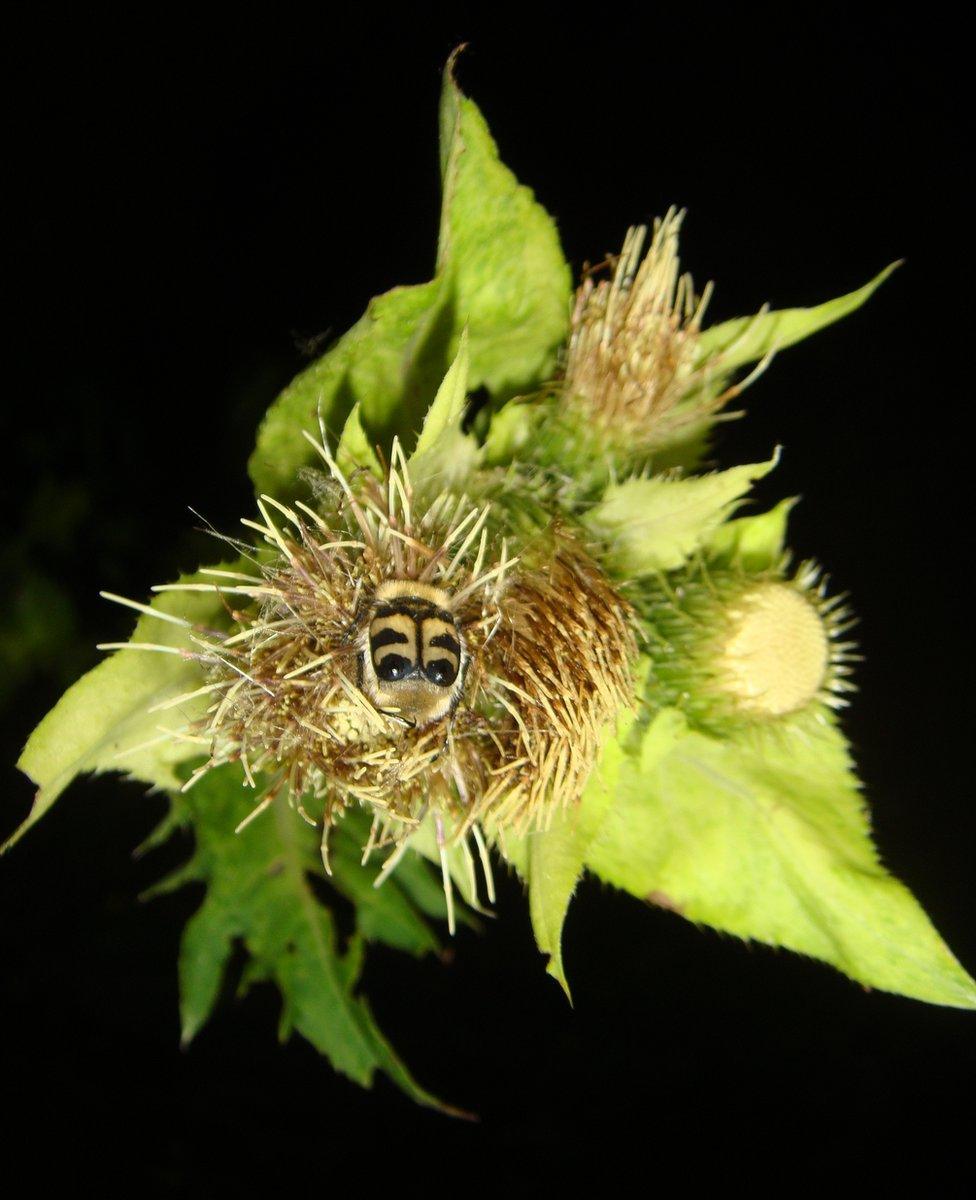Pollination threatened by artificial light
- Published

Researchers have discovered a new global threat to pollination - artificial light at night, which was found to reduce visits of nocturnal pollinators to flowers by 62%.
The impact of this is a significant reduction in fruit production.
Pollinator numbers are declining worldwide so this is not good news for wild plants and crop production.
Nocturnal insects are easily distracted from their pollination duties by the lure of bright lights.
Fruit begins with a flower, but not every flower results in a fruit. A number of factors result in the remarkable transformation of flower to fruit and one of the most important is insect pollination.
But insects are in rapid decline caused largely by an anthropogenic assault including habitat loss and disruption, pesticide use, invasive alien species and climate change.
But in a new study reported in Nature, external, another threat is revealed - artificial light at night.
Dr Eva Knop, University of Bern, Switzerland, who led the research said: "Our study suggests that it is quite common for plants to have both night and day pollinators. During night it is often the scent that attracts the nocturnal pollinators but also other cues can be important, such as visual cues as the nocturnal pollinators have often very sensitive eyes."
We are all familiar with bees and butterflies pollinating flowers during the day but come sundown a parade of "night-shift" pollinators take over.
"In our study, the most abundant night time pollinators were moths (Lepidoptera), followed by beetles (Coleoptera) and bugs (Hemiptera)", said Dr Eva Knop.

The scientists focussed on the fruiting productivity of the cabbage thistle
But, owing to artificial light contamination, from street lamps for example, our nights are no longer properly dark. Artificial light at night is spreading globally at an estimated rate of 6% per year.
In the first study to directly relate artificial light at night with change in the behaviour of insects the researchers conducted experiments in the meadows of Switzerland. Seven meadows were flooded with artificial light at night, replicating street lighting, and seven were left to natural levels of night time darkness.
The scientists carefully monitored the insect plant interactions in both illuminated and naturally dark meadows and found the number of visits by nocturnal pollinators to plants in the illuminated areas was severely reduced.
Worldwide concern
But does a lack of night time pollinator visits to a bloom impact the plants' ability to set fruit? After all, it's possible that the day time pollinators could compensate.
To answer this, the scientists focussed on the fruiting productivity of the cabbage thistle (Cirsium oleraceum), one of the most frequently visited plants by all pollinators in the meadows.
During the day, the number of insect visits to the cabbage thistle are similar, regardless of whether the thistle grows in a meadow exposed to night time illumination or not.
Despite this the researchers found that plants exposed to artificial light at night showed a 13% reduction in the number of fruits produced. So despite the activity of day time pollinators artificial light at night reduces fruiting.
Against a backdrop of worldwide insect number reduction this additional threat to pollination is deeply concerning. Pollination of flowers is essential in natural ecosystems and for crop production and global food supply.
The reason that nocturnal insects visit flowers less frequently in artificially-illuminated sites needs further research. Eva Knop said: "It is known that many nocturnal insects are attracted by the light of lamps and thus distracted from visiting flowers. Thus, this is a likely mechanism but probably not the only one."